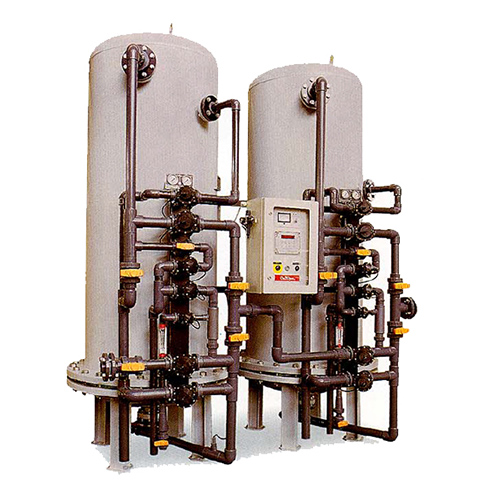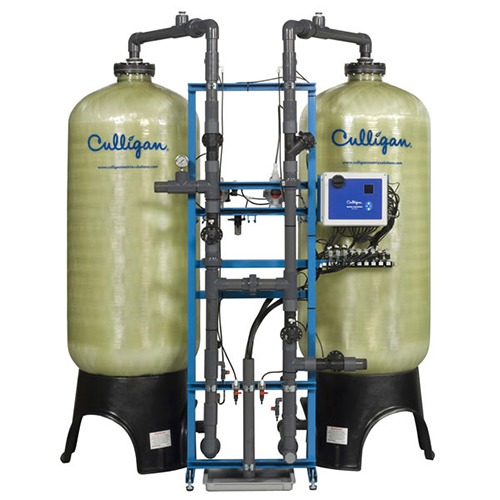Electro-dialysis (ED) and electro-deionization (EDI) are techniques for the removal of dissolved substances from water.
With this, they are comparable with membrane filtration and ion exchange techniques. ED and EDI make use of a combination of an electrical potential and semi-permeable membranes. With EDI, use is additionally made of ion exchange resin. EDI can thus be considered as a combination of ED and ion exchange (IX).
A familiar application of ED is desalinization of brackish water. Application of ED can offer economic advantages relative to the use of NF or RO.
EDI is primarily used for the production of very pure water for the semiconductor industry and high-pressure kettle supply water. The raw water has to already be fairly pure, so that EDI is often used as a polishing technology. It is a competitor for mixed-bed ion exchange systems, with the advantage that no chemicals are needed. EDI is often applied as a polishing step behind an RO unit.

Operation ED and EDI
The driving force for both ED and EDI is an electrical potential difference. The potential difference is generated by an electrical source.
ED
The ED module is formed by a series of anion- and cation-selective semi-permeable, plate membranes that are placed alternately between an anode and a cathode. In this way, compartments, or cells, are formed between the membranes. A voltage difference is generated across the anode and cathode. The raw water is pumped through the cells. The positively charged cations in the raw water migrate to the cathode, and the negatively charged anions to the anode. The cations can pass through the cation-selective membrane but are held back by the subsequent anion-selective membrane. The anions pass the anion-selective membrane, but are held back by the subsequent cation-selective membrane.
This process results in an alternation of cells with a high ion concentration and cells with a very low ion concentration, respectively called the concentrate and the dilutate. The latter is the product water.
EDI
The operation of EDI is in broad strokes the same as that of ED. The dilutate compartments here are filled with ion-exchange resin. The resin present lowers the internal resistance and strongly promotes ion transport, so that pre-purified water can be treated.
Due to the application of the ion-exchange resin, a very high purity (very low conductivity) of the dilutate can be achieved.
The resin gradually becomes saturated and has to be regenerated. The combination of low conductivity and a strong electrical potential causes splitting of water molecules at the surface of the ion-exchange resin. The molecules for hydrogen – (H+) and hydroxyl- (OH-) ions. These ions cause a continuous regeneration process of the ion-exchange resin.
Experience RWB
RWB as delivered various ED/EDI units, also as part of complete purification installations in combination with pre-filtration and reverse osmose. Use is often made for this of our standard Culligan components range. This combines good performance with a competitive price.
More information about ED and EDI?
Feel free to contact us via the number below or use the contact form.



